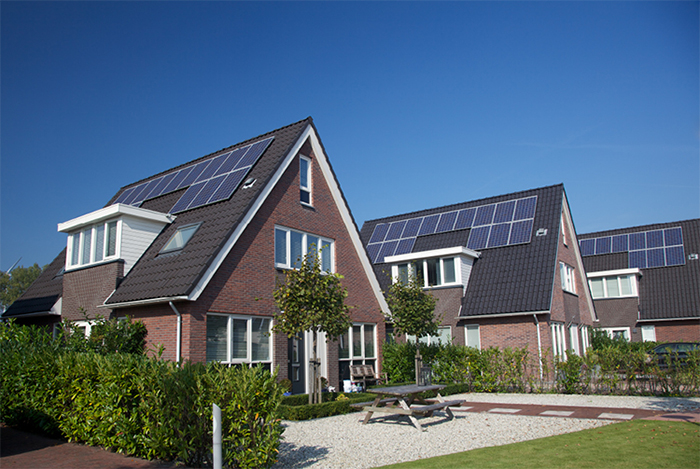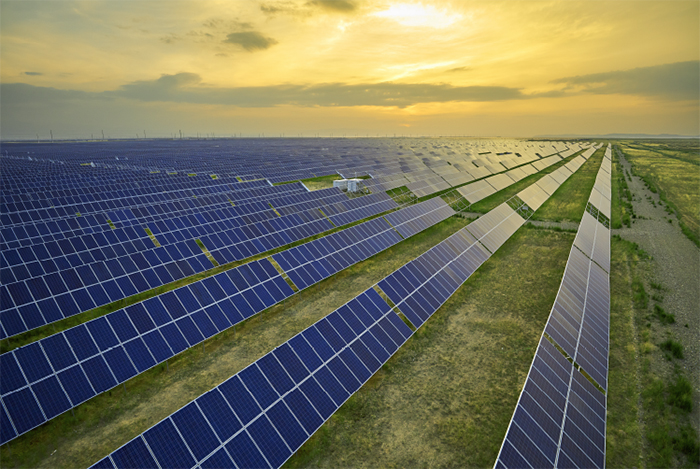Controlled PV power plant maintenance and operation differ from distributed PV power plant maintenance and operation in several details:
Scale and financial investment:

Distributed PV is typically implemented on smaller-scale, industrial parks, residential rooftops, and other locations, with a capacity ranging from several kilowatts to several megawatts. Designed for individuals or small businesses, the investment is comparatively modest and can be progressively escalated in accordance with practical requirements due to its limited scope.

Centralized photovoltaic power stations, the size of which can reach tens of megawatts or even hundreds of megawatts, are typically constructed in grasslands, deserts, and other regions abundant in light resources. The economic benefits are substantial, while the unit cost of power generation is low, despite the enormous investment.
Standardization of maintenance and operation work:
The "electric power industry operation regulations" serve as the benchmarks for centralized work stations of boosting stations, high-voltage switching stations, and other high-voltage system equipment operation and maintenance. In contrast, there are no national or industry standards for the remaining operation and maintenance tasks; rather, each enterprise will devise its own set of operation and maintenance procedures.
In general, distributed photovoltaic power stations lack dedicated operation and maintenance staff. Instead, they rely on remote monitoring platforms and routine inspections by operation and maintenance personnel to conduct their upkeep. Furthermore, in comparison to centralized power stations, the operation and maintenance work of distributed PV power stations will involve fewer preventive tests of high-voltage equipment, booster stations, and switching stations. Furthermore, operation and maintenance work specifications are absent from distributed PV power stations.
Extent of the application:
PV that is distributed can be installed on building walls, rooftops, and other surfaces.
Centralized PV is appropriate for open areas, deserts, and expansive solar farms.
Power generation is typically modest in distributed PV systems due to the limited surface area. However, individual devices have the capability to supply energy for a single structure.
Due to its centralized location, concentrated PV has a greater capacity for power generation. This enables it to utilise a greater area of solar panels, thereby supplying energy to a greater number of consumers.
In terms of generation costs:
Distributed PV electricity generation is more costly due to the requirement of distributing the energy to individual buildings.
Centralized PV benefits from economies of scale and reduced generation expenses.
Positives and negatives:
One benefit of distributed PV is that it enables the dispersion of solar panels throughout buildings, thereby minimization energy waste and supplying power to individual structures. Furthermore, distributed PV is distinguished by its extended lifespan and exceptional dependability. The high cost of power generation, the difficulty of operation and maintenance, and the requirement for individual equipment monitoring and maintenance are all drawbacks of distributed PV.
Centralized PV has the ability to utilise a substantial area of solar panels while maintaining economies of scale, reduced power generation costs, and enhanced energy efficiency. Moreover, centralized PV is less complicated to operate and maintain, as well as manage. Centralized PV is characterised by the requirement for a substantial land area and centralized monitoring and maintenance. Additionally, the implementation of centralized PV is insufficiently adaptable to certain unique circumstances, such as mountainous regions and urban areas.
In brief, centralized PV power plant operation and maintenance differ substantially from distributed PV power plant operation and maintenance with regard to investment and scale, power generation, costs associated with power generation, scope of application, operation and maintenance work specifications, and advantages and disadvantages. Thorough consideration should be given to the actual situation and demand in order to select the most suitable variety of photovoltaic power plant for the specific application.







